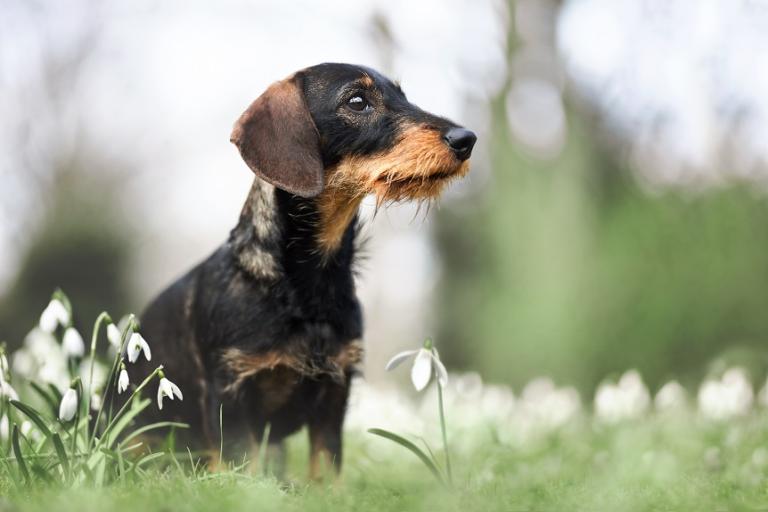Neuronal Ceroid Lipofuscinosis 2 (NCL2 Dachshund)
Neuronal ceroid lipofuscinosis 2 (NCL2) is a metabolism-induced neurodegenerative disease caused by a deletion of a single base pair in exon 4 of the TPP1 gene. In this disease, the waste product of cell metabolism, ceroid lipofuscin, is stored in the cells and is not metabolised further. This accumulates in the nerve cells of the retina and brain. Affected animals therefore show symptoms such as visual disorders, balance disorders and later completely disoriented behaviour and physical degeneration.
The disease occurs in Dachshunds. The inheritance is autosomal recessive.
Genetic Test: available in Shop
Symptoms
- Visual disorders
- Blindness
- Balance disorders
- Deformed posture
- Change in behaviour
- Disoriented behaviour
- Physical degeneration
General Information
- Neuronal ceroid lipofuscinosis 2 (NCL2) is a metabolic neurodegenerative disease.
- The waste product of cell metabolism, ceroid lipofuscin, is stored in the cells and not metabolised further.
- This leads to the deposition of ceroid lipofuscin in the brain and retina.
- The function of the nerve cells is severely damaged as a result.
- At the age of 6-7 months, disorders of the visual sense appear, the brain is affected a little later.
- NCL2 cannot be treated, often affected animals are euthanised.
Test Information
This mutation test detects a deletion of a single base pair (c.325delC) in exon 4 of the TPP1 gene.
Test in Shop
Also in the Hereditary diseases Dachshund 1 package
Genotype and Lab Report
Inheritance: autosomal recessive
→ The disease only occurs if both alleles of the gene are affected by the mutation (ncl2/ncl2). Dogs that have only one allele with the causative mutation (N/ncl2) are clinically healthy carriers.
Genotypes:
N/N = genetically normal
The dog has no predispositions for NCL 2 and therefore cannot pass it on to its offspring.
N/ncl2 = a carrier
The dog is a clinically healthy carrier. The variation is passed on 50% to the offspring, who are also carriers.
ncl2/ncl2 = affected
The variation would be passed on 100% to the offspring. The animals do not reach breeding maturity.
Recommendations
- Carrier animals can be bred to normal animals (N/ncl2 x N/N). Before using the offspring in breeding, it should be tested whether they are normal or carriers.
- Mating two carrier animals (N/ncl2 x N/ncl2) should be avoided because there is a 25% chance that the offspring will be affected.
- Affected animals (ncl2/ncl2) should be excluded from breeding but nearly never reach maturity.
Literature
Awano, T., Katz, ML., O’Brien, DP., Sohar, I., Lobel, P., Coates, JR., Khan, S., Johnson, GC., Giger, U., Johnson, GS.: A frame shift mutation in canine TPP1 (the ortholog of human CLN2) in a juvenile Dachshund with neuronal ceroid lipofuscinosis. Mol Genet Metab 89:254-60, 2006. Pubmed reference: 16621647. Doi: 10.1016/j.ymgme.2006.02.016.
Further information is available at: Online Mendelian Inheritance in Animals.

